---------------------------------------------------------
You can buy started strawberry plants at the nursery. By buying bare root strawberry sets you can save a ton of money, and get a larger variety and healthier, more vigorous plants. And if your family is like mine, there can never be too many strawberries!
There are dozens of strawberry varieties for every climate. Before purchasing make sure the variety you are looking at is suited to your growing zone. All the varieties can be categorized into three types.
Types of Strawberries
June Bearing Strawberries
The most popular & most productive of all the varieties. As their name suggests, berries are harvested over the course of 4-5 weeks in early summer. With a huge yield in just a few weeks, these strawberries are great for making preserves, jams & jellies (but they are also great for fresh snacking!). June Bearing generally produces the biggest berries and the largest amount of runners (baby strawberry plants).
Ever Bearing Strawberries
Unlike June Bearers, their name is a little misleading. They don’t bear all year round, but they do have two large harvests. Harvests are usually around mid-summer and then again in early autumn. Ever Bearing strawberries produce smaller fruit than June bearers and fewer runners. Fewer runners make Ever Bearing a good choice for planters or raised beds.
Day Neutral Strawberries
These are the true “ever bearers” as they will produce fruit from spring to fall. They are great if you are looking for fresh-eating harvests with total yields similar to Ever Bearing varieties. Day Neutrals produce the smallest strawberries. They produce the fewest runners of all the varieties so are a good choice for planters or raised beds. Some gardeners even grow them as annuals, starting fresh with a new crop each year.
Many gardeners grow a combination of strawberry types. June Bearers for the big juicy berries with a big all-at-once harvest for preserving and then either an Ever Bearing or Day Neutral variety so they can have fresh eating berries all season.
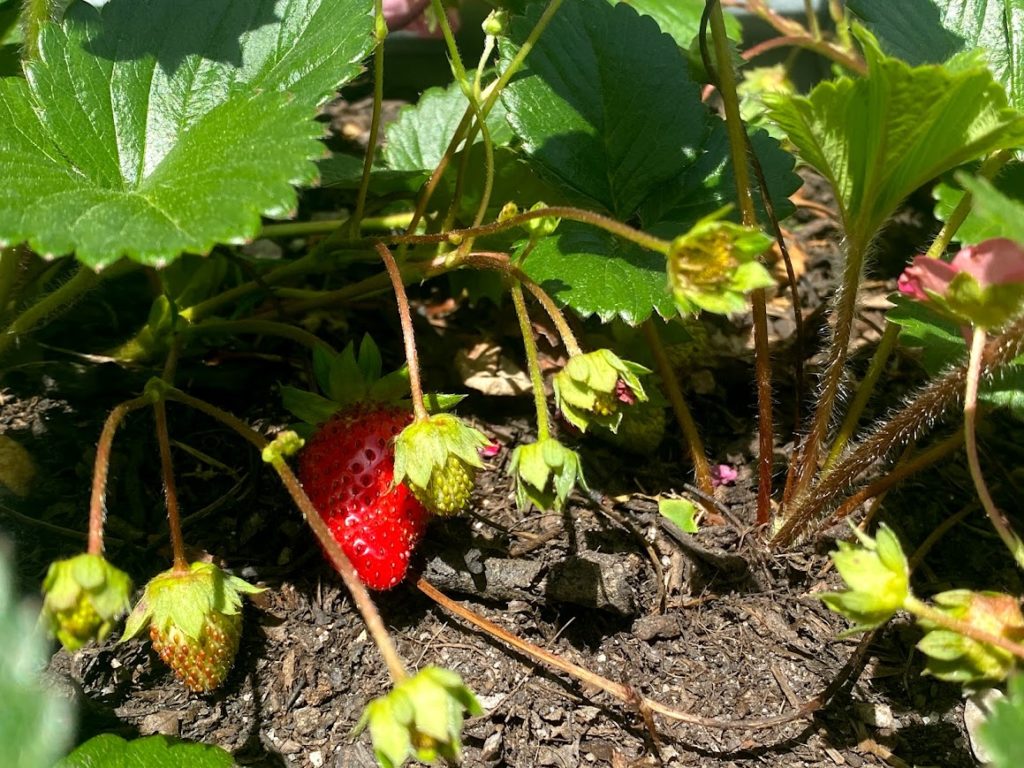
Where to grow your strawberries
Strawberries grow well in containers or raised beds because they love loose, rich compost. If you are planting in the ground, till the area for planting down about a foot. Get a soil test done to see if you need to amend your soil before transplanting. Strawberries like a pH of 6.0-6.5. They love a rich compost made from food waste or aged barnyard manure. Select a spot that gets at least 8 hours of full sun. Strawberries will grow in partial shade, but the fruit yields will be decreased.
What are Bare Root Strawberry Plants?
When you get your bare root berry plants, they won’t look like much. To harvest the bare root plants, the nursery has dug them up while still dormant, allowing them to survive even without water & nutrients.
You should aim to plant your bare root plants as soon as possible after purchase so your plants don’t “wake up” before you get them in the ground. Plant in early spring/late winter, about a month before your last frost date for your area, as long as the ground has thawed. If you buy your berries too early and the ground isn’t ready yet, keep them in a cool, dark location. Mist the roots occasionally so they don’t dry up.
Preparing Bare Root Strawberries
To get the plants ready to go in the ground, carefully separate them, untangling the roots. Each plant should have a crown (a hard round ball) with roots coming out the bottom. There might be a young plant starting to wake up, emerging from the top of the crown. Fill a bowl with warm water and place the plant roots in the water. If you have some liquid fish fertilizer you can add a little to the water.
You don’t have to submerge the whole plant, just get the roots in and let them soak for about 30 minutes to hydrate them and get them ready to wake up.
Spacing
Lay the bare root plants out where they are to be planted. Keep in mind June Bearing varieties will produce runner plants. You want to leave room for each mother plant to have 3-4 daughter plants. The Ever Bearing & Day Neutral varieties will not produce that many runners and can be placed closer together.
Refer to the package instructions, but in general non runner varieties can be spaced every 12 inches, the June Bearers being placed 18-24 inches apart.
Planting
Dig a hole about 6-7 inches deep, place the plant in so the crown is just at the soil surface level and the roots have plenty of space to spread. Cover the roots with compost, holding the crown at surface level. You don’t want to bury the crown or it could rot, and you don’t want it totally exposed or it could dry out.

Give your new strawberry patch a good watering and then cover with mulch. Straw is a popular choice. Mulching will keep the roots warmer, will help keep the soil moist, and keep the weeds down. Water the patch often enough to keep the soil moist.
After two weeks, I like to give the new berries a boost with some all natural chicken manure fertilizer (click here to see how I make it). I fertilize again every 2-3 weeks until the plants start to put out blossoms.
Pinching Off
Now here comes the hardest part – but trust me it will pay off in the end. You have to pinch off all the flowers the plants set out that first year (for June Bearers). Yes, that means no strawberries this year but just wait until next year! You will have huge, healthy plants with strong roots and more strawberries than you know what to do with!
The first year you want the plants to focus their energy on putting out strong roots and growing, not dividing their energy by producing fruit as well. For June Bearing varieties, pinch off all the flowers AND all the runner plants for that first year. For Ever Bearing pinch off all the flowers and runners through at least the end of July – which means you could have a small fall harvest. For Day Neutral you don’t have to pinch off the flowers if you are planning on growing them as annuals. If you are planning on keeping a bed of perennial Day Neutrals, I would pinch off all the spring/summer blooms to get a good strong plant established.
Long Term Maintenance
Strawberries don’t require as much maintenance as some might think. In the fall, mulch the berry patch with straw or leaves to help keep them warm & moist over the winter. In the spring, side dress the rows with compost to provide nutrients for the upcoming growing season.
During the growing season, the biggest challenge is keeping the runner plants in check. June Bearing strawberries will reproduce until they take over the entire area where they are planted. If they are allowed to do that, the plants are using up all the resources reproducing rather than setting fruit. Allow each mother plant to set out 3-4 daughter plants and pinch off all other runners. Pinch off any runners the daughter plants produce the first year, but the second year allow 3-4 of her daughters to set. Where this cycle ends is up to you and how much space you have. Strawberry plants peak in harvest around year three, then decline for a couple of years before they die off around year 6 or 7.
As we previously mentioned above, if you don’t want to deal with all the runner maintenance, select Ever Bearing or Day Neutral varieties which produce little to no runners. No matter which variety you plant, netting the plants once the fruit starts to set is vital unless you want to feed all the neighborhood birds, squirrels, rabbits, and deer!
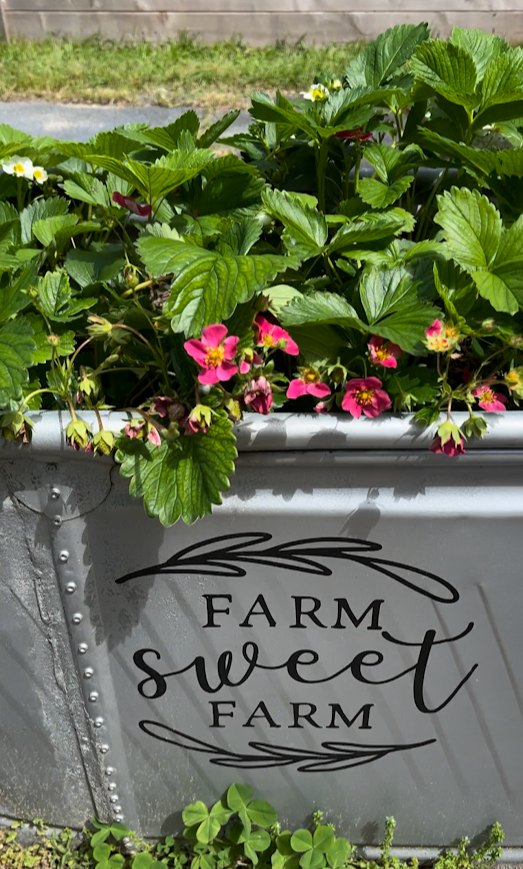
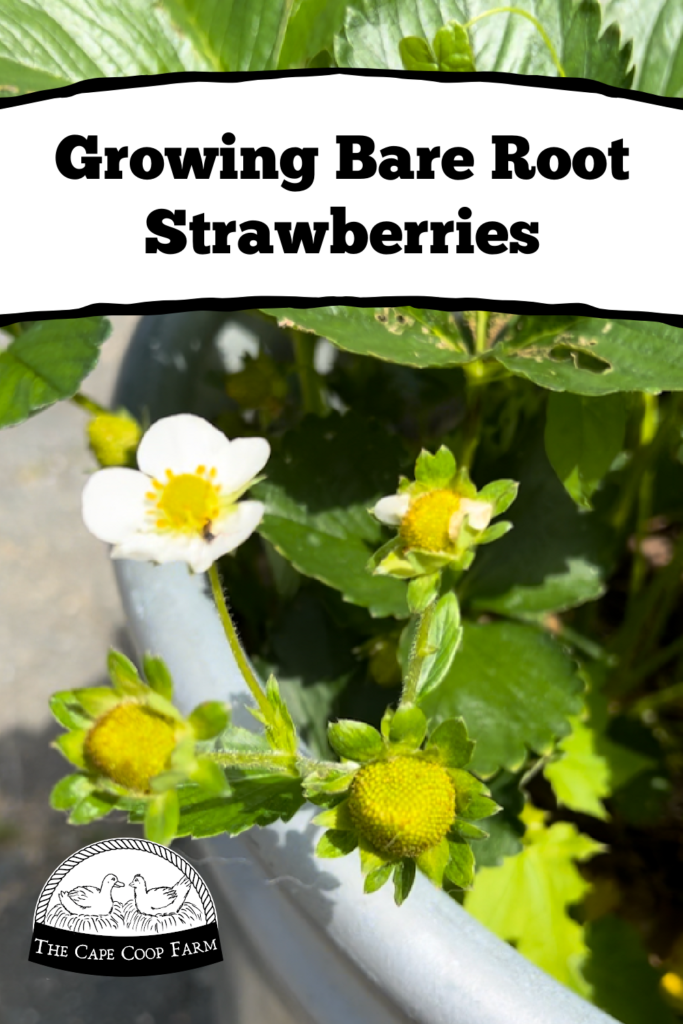

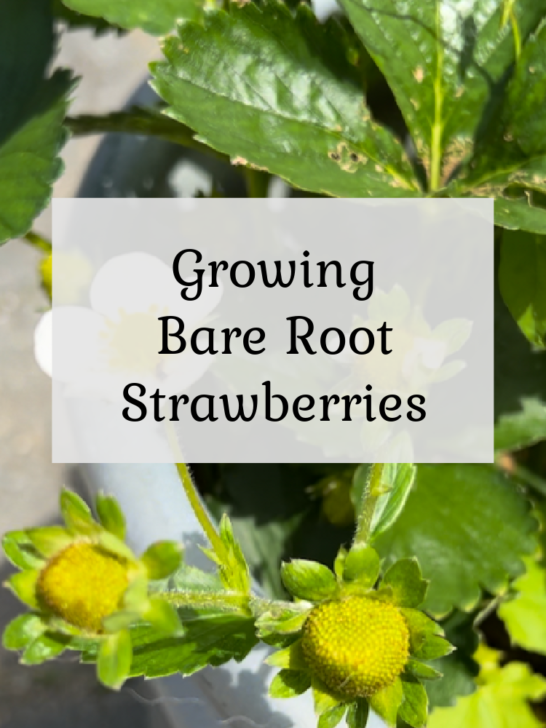

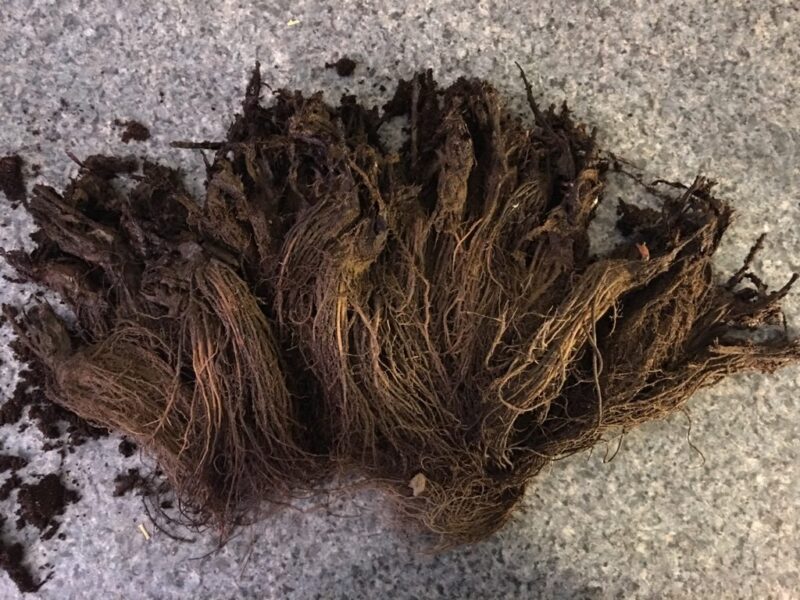



Rachel
Sunday 22nd of August 2021
Comment Hi can you plant runners to produce more straws
Liz
Monday 23rd of August 2021
Yes you can
KAthy okerlund
Tuesday 31st of March 2020
Do i need to add peat moss in ,zone 7 to strawberries
Liz
Tuesday 31st of March 2020
You don't "need" to add peat moss if you don't want to. I have had strawberries in raised beds grow fine without it (I think it is more necessary if you are growing in ground because you can't control the soil as well). Peat moss is great for controlling the moisture in the soil so many gardeners mix in peat moss as about 1/3 of their garden bed soil. Many fruits & veggies don't like to be in soggy soil or extremely dry soil. If you have soil that drains well and you are good about regular irrigation you could skip peat moss.
AMANDA CRISP
Wednesday 25th of March 2020
Hi, how long after planting the dormant roots will you see new growth or determine if they are dead?
Liz
Thursday 26th of March 2020
Hi Amanda, you should start to see some growth or greening by a week depending on weather, soil temps, sunlight, etc. If your conditions are less than ideal it could take two or three weeks. If you don't see anything by a month, you likely received damaged or dead plants
Nichole Hall
Wednesday 20th of April 2016
This is very informative. Thanks so much! Last year I planted my first set of strawberry plants and I pinched off all the flowers and cut runners. This year only about half have come back and they are just now starting to flourish. I have a few bearing fruit already. I'm pretty sure I planted Ever berry and June berry. I am hoping they do well, but my chickens have wreaked havoc, so I think at this point I'm trying to do damage control.
Liz
Wednesday 20th of April 2016
That's a great sign you already have some bearing fruit! Keeping the chickens out of the garden can be a daily struggle around here too lol. I try to fence it off but they are determined little buggers